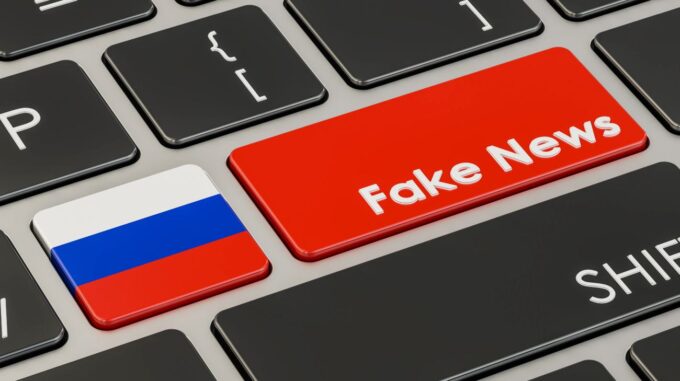The Center for Strategic Communications and Information Security has officially refuted the widely circulated fake propagated by Russian propagandists regarding an alleged attack by the Ukrainian Armed Forces on a helicopter with Vladimir Putin in the Kursk region

The agency emphasizes that information about supposedly breaches by kamikaze drones and an attempt to strike the Russian president is another disinformation provocation with no factual basis. According to the Center, the Russian leader visited the Kursk region on May 20 of this year. This was, according to official sources, his first visit to the area after the Russian Defense Ministry announced the complete liberation of the territory from Ukrainian defenders. On the very day of this visit, Russian propagandists began spreading reports claiming that Putin was placed under threat — that his helicopter, which was escorting the Kremlin head, was targeted in a large-scale drone attack. The official position of the Center for Strategic Communications states that this information has not been confirmed by the Ministry of Defense services or local sources. On the contrary, the Ukrainian side did not record any incidents resembling a drone attack, which would corroborate reports from pro-Russian Telegram channels or Russian media. They note that all mentions of a possible drone clash were neither large-scale nor resembled an armed attack involving drones on a significant scale. Interestingly, this information was previously circulated by Yurii Dashkin, commander of the Air Defense Division in Kursk, who was quoted by pro-government media. According to him, during Putin’s visit, there were allegedly "multiple attempts of drone attacks" in the region — a description used to create an impression of a supposedly horrific attack. However, this statement has been met with skepticism from the start: Ukrainian official sources did not confirm anything of the sort, and Russian agencies have overlooked this incident. It is worth emphasizing that all footage showing Putin’s convoy, broadcast on federal channels during the visit, demonstrate the absolute safety of the Russian leader during this period. Experts note that Russian propagandists deliberately highlight supposed "threats" from Ukraine to craft an image of ongoing danger, justify further repression, and increase internal tensions. However, the actual situation, according to the Office of Strategic Communications, is far from the dramatic scenarios deliberately portrayed by Russian media. In conclusion, the official stance of Ukrainian experts regarding the incident in the Kursk region is clear: the security community continues to find no evidence of Ukrainian drone attacks on high-profile targets in the region, and the dissemination of false reports is purely an informational campaign aimed at heightening fear and internal tension within Russian society. Therefore, all claims of a "drone attack" on Putin’s helicopter are currently another attempt by Russian media to create the illusion of an extraordinary threat, while the real security situation in the Kursk region remains under Ukrainian control.

